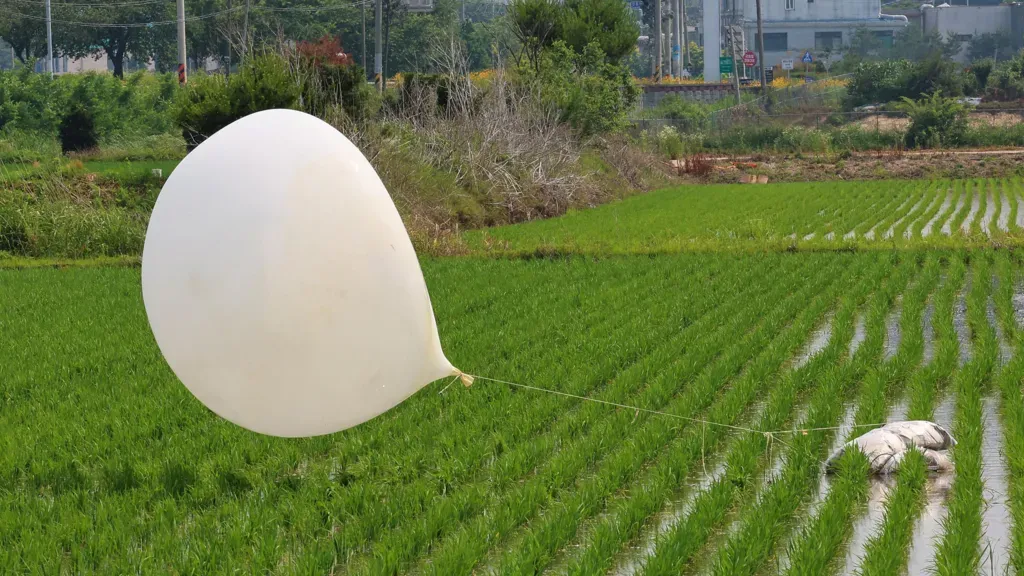Introduction
In an unusual and unsettling development, South Korea’s presidential compound in Seoul has recently become the target of an unconventional form of protest. Balloons carrying rubbish from North Korea have been reported to land within the confines of the South Korean leader’s office. This incident marks a significant escalation in the ongoing tensions between the two Koreas and highlights the growing intensity of their unconventional propaganda campaigns.
The Incident
Unprecedented Breach
For the first time, the South Korean presidential office, a high-security no-fly zone, has experienced a breach of this nature. The arrival of trash-laden balloons from North Korea represents a bold move by Pyongyang and has raised serious security concerns. This breach underscores the ongoing volatility and unpredictability in the Korean peninsula’s geopolitical landscape.
Response and Investigation
Upon discovering the balloons, South Korean officials immediately dispatched a specialized team trained in handling chemical, biological, and radiological threats. This team was tasked with collecting and assessing the balloons to ensure that they did not pose any contamination or safety risks. Thankfully, the balloons were determined to be free from hazardous substances.

Military Decision
In a precautionary measure, South Korea’s military refrained from shooting down the balloons. The decision was influenced by the potential risk of dispersing the balloon’s contents further across the area, which could have led to an even greater public health hazard. The military and local authorities urged residents to avoid touching any balloons they might encounter and to report them to the nearest military unit or police station.
The Impact and Significance
Propaganda Tactics
The use of balloons as a propaganda tool is not new. Both North and South Korea have employed this method since the Korean War in the 1950s. The balloons are often used to deliver messages, leaflets, or other forms of communication across the border. However, the current incident stands out due to its audacity and the nature of its contents—rubbish, which is intended to provoke and insult rather than to convey a political message.
Escalation of Tensions
This balloon incident comes on the heels of intensified propaganda activities between the two Koreas. Just days prior, South Korea’s military had resumed loudspeaker broadcasts along the border, a traditional method of psychological warfare. North Korea’s recent launches, which have included thousands of balloons since May, are viewed as a direct response to South Korean activists’ balloon campaigns.
Activist Influence
South Korean activists have been sending balloons across the border with various contents, including anti-Pyongyang leaflets, food, medicine, money, and USB sticks loaded with K-pop videos and dramas. These activities have been perceived by North Korea as provocative and disrespectful, leading to their retaliatory actions. The North’s latest balloon launch, which was the tenth of the year, reflects the escalating nature of this unconventional form of protest and retaliation.
Broader Context
Historical Context
The use of balloons in the Korean conflict is deeply rooted in the history of the peninsula. Since the Korean War, both nations have utilized balloons as a means of psychological and informational warfare. These balloon campaigns have included various forms of content, from political propaganda to entertainment media. The latest incident underscores the ongoing relevance of this tactic in the modern geopolitical context.
Geopolitical Implications
The escalation of balloon launches and the resulting breach of South Korea’s presidential compound highlight the fragile state of inter-Korean relations. The incident also sheds light on the broader implications of propaganda and psychological warfare in the ongoing conflict between North and South Korea. As both nations continue to engage in these unconventional tactics, the potential for misunderstandings and further escalations remains high.
Conclusion
The recent balloon incident at South Korea’s presidential compound is a stark reminder of the enduring and often unpredictable nature of the Korean conflict. As North Korea continues to employ unconventional methods of protest and retaliation, South Korea’s response remains vigilant and measured. The use of balloons as a means of propaganda and psychological warfare illustrates the complexities of inter-Korean relations and the ongoing struggle for influence and control on the Korean peninsula.
In addressing this incident, it is crucial for both nations to navigate the delicate balance between security, diplomacy, and public perception. As the situation develops, it will be important to monitor how these unconventional tactics impact the broader geopolitical landscape and the prospects for future dialogue and resolution.


